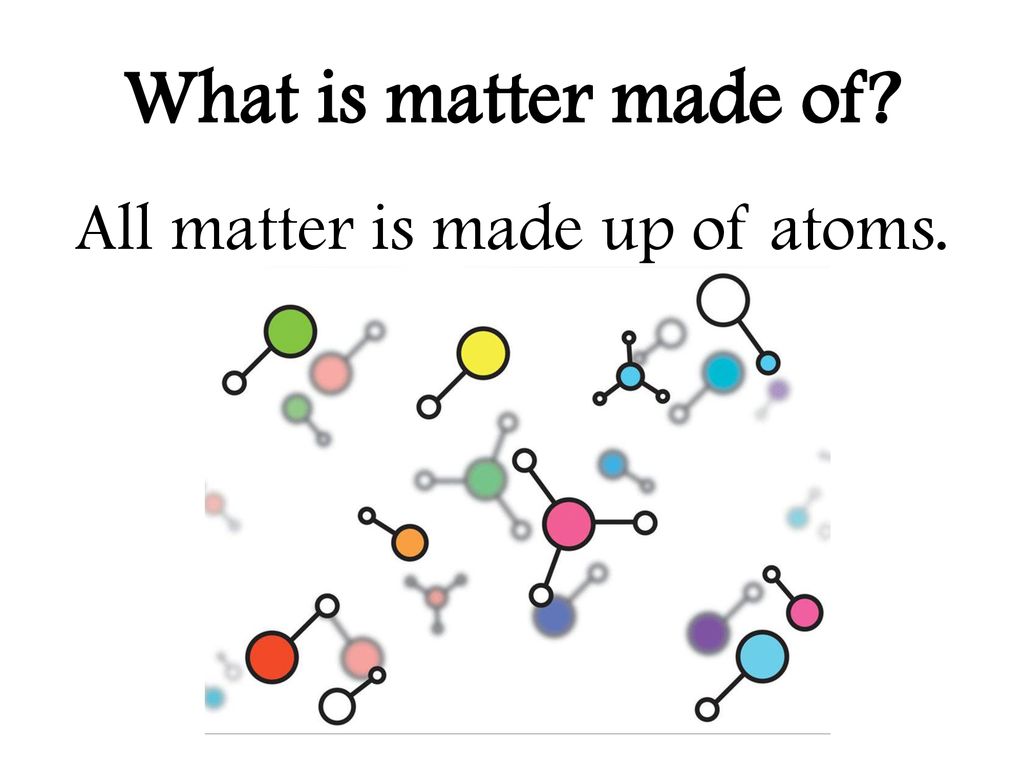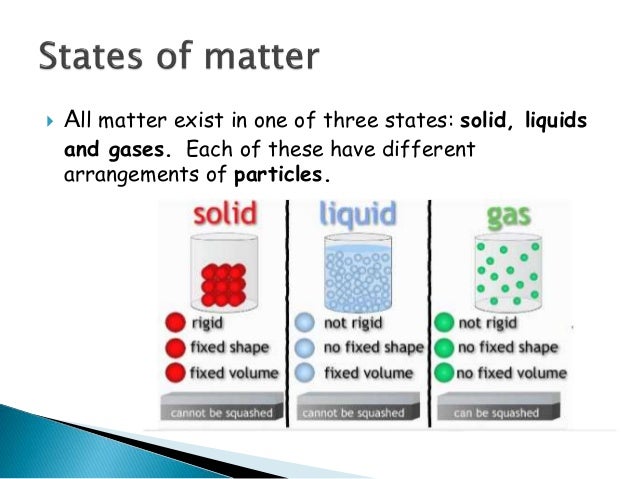- All Matter Is Made Of Molecules
- What Is Made Of Matter
- All Matter Is Made Of Substances Called
- All Matter Is Made Of Substance Called
- All Matter Is Made Of Tiny Parts Called
All matter is composed of extremely small particles called atoms.
All atoms of a given element are identical in size, mass, and other properties. Atoms of different elements differ in size, mass, and other properties.
- Atoms cannot be subdivided, created, or destroyed.
Atoms of different elements can combine in simple, whole-number ratios to form compounds.
In chemical reactions, atoms are combined, separated, or rearranged.
All Matter Is Made Of Molecules
Review Constants All matter is made up of atoms An atom has a nucleus consisting of positively charged protons and uncharged neutrons. Negatively charged electrons are found outside of the nucleus of the atom (Figure 1) Part A Match each property to the appropriate subatomic particle. Activists from Black Lives Matter and All Lives Matter made news when they embraced during a run-in in Dallas, stating: 'We're all brothers and sisters.' 15 On October 2, 2016, a fan at a Chicago Bears NFL game ran onto the field during a television timeout during the 4th quarter dressed in a gorilla costume, wearing a shirt that read 'All.
Adjustments to Dalton's Atomic Theory
We now know that atoms of the same element can have different masses and are calledisotopes. Isotopes have a different number of neutrons than the 'average' atom of an element.
We have also discovered the possibility ofatomic fission; splitting the atom (Hiroshima & Nagasaki).
What Is Made Of Matter
Elements are composed of atoms, which are extremely small.
All atoms of a given element have the same chemical properties and contain the same number of protons.
Compounds are formed by the chemical combination of two or more different kinds of atoms. (Whole numbers only)
Atoms are the units of chemical change.
http://www.ithaca.edu/faculty/anderson/chem121/modatomc.htm
Def: An atom is the smallest unit of a substance that retains the properties ofthat substance.
Atoms are composed of three types of particles:
Particles | Symbol | Charge | Location |
Protons | p+ | Positive charge | Found in the nucleus |
Neutrons | N0 | Neutral (no) charge | Found in the nucleus |
Electrons | e- | Negative charge | Found orbiting the nucleus |
Nucleus – The positively charged central region of an atom, composed of protons and neutrons and containing almost all of the mass of the atom. More simply the nucleus is the “middle part” of an atom defined by an imaginary boundary separating it from the orbiting electrons.

Rutherford's view of the atom (1914)
http://www.daviddarling.info/encyclopedia/R/Rutherfords_experiment_and_atomic_model.html
Bohr models of various atoms. (1920)
http://www.clickandlearn.org/Gr9_Sci/atoms/modelsoftheatom.html
Quantum model of a sodium atom. (Current)
Atomic Number- Determined by the number of protons
Atomic Mass Unit- mass of one proton or one neutron (they are about the same)
Atomic Mass- Mass of an atom: determined by adding the protons and neutrons
(Actually this number is an average; re. isotopes)
Atomic Number
Atomic Symbol
Atomic Mass
All Matter Is Made Of Substances Called
The number of protons is equal to the number of electrons
p+ = e-
The mass number minus the atomic number equals the number of neutrons
mass # - atomic # = N0
Orbital- three-dimensional region about the nucleus in which a particular electron can be found.
Quantum numbers- numbers that specify the properties of atomic orbitals and of their electrons.

Principal Quantum number- indicates the main energy levels surrounding a nucleus, sometimes referred to as shells or orbitals. (1,2,3,4,5,6,7) Larger numbers are farther away from the nucleus and electrons found here have more energy.
Orbital quantum number- indicates the shape of an orbital. Often referred to as sublevels or subshells. (s,p,d,f in order of increasing energy)
s orbitals can hold 2 electrons
p orbitals can hold 6 electrons
d orbitals can hold 10 electrons
f orbitals can hold 14 electrons
Magnetic quantum number- indicates the orientation of an orbital about the nucleus. (x,y.z coordinates)
Spin quantum number- indicates the spin of an electron (+1/2, or -1/2)
Atoms are mostly empty space. If the nucleus of an atom had the diameter of a dime, the outer edge of the atom would be about 50 yards away.
If a proton were enlarged to the size of the head of a pin, the outer edge of the atom would be about 100 meters away.
This is a very distorted model of the atom.
If this picture were drawn to scale:
And if the protons and neutrons were a centimeter in diameter;
Then the electrons would be less than the diameter of a hair; and
The entire atom's diameter would be greater than the length of 30 football fields!
If an atom were as large as a football stadium, the nucleus would be the size of a small ladybug crawling across the 50-yard line. In spite of this size difference, virtually an of the mass of an atom is concentrated in its nucleus. One electron, which has a negative charge, weighs only 1/1836 as much as the lightest of all nuclei, that of the hydrogen atom (proton).

In addition, all the particles (protons, neutrons, and electrons) are constantly in motion.
Rutherford's Gold Foil Experiment
http://www.rsc.org/chemsoc/timeline//pages/1911.html
1911- Ernest Rutherford publishes his atomic theory describing the atom as having a central positive nucleus surrounded by negative orbiting electrons. This model suggested that most of the mass of the atom was contained in the small nucleus, and that the rest of the atom was mostly empty space. Rutherford came to this conclusion following the results of his famous gold foil experiment. This experiment involved the firing of radioactive particles through minutely thin metal foils (notably gold) and detecting them using screens coated with zinc sulfide (a scintillator). Rutherford found that although the vast majority of particles passed straight through the foil approximately 1 in 8000 were deflected leading him to his theory that most of the atom was made up of 'empty space'.
What percentage of the volume of an atom is just empty space?
Take an online Element Quiz
If you know of some information you think should be included on this page, please let me know!!
Interactive Periodic Charts:
go on to learn about theInteraction of Matter
Sources:
http://nwscc.cc.al.us/distance/bio103/topic3/3/sld001.htm A good PowerPoint presentation about atoms

http://www.colorado.edu/physics/2000/waves_particles/wavpart2.html cool particle applet
http://www.howstuffworks.com/framed.htm?parent=atom.htm&url=http://chipo.chem.uic.edu/web1/ocol/SB/1-2.htm more info on orbitals & shapes
http://www.chemguide.co.uk/atoms/properties/gcse.html#topA SIMPLE VIEW OF ATOMIC STRUCTURE
http://www.biologylessons.sdsu.edu/classes/lab2/index.html
All Matter Is Made Of Substance Called
http://press.web.cern.ch/pdg/cpep/big_question.html how do atoms/molecules 'stick' together
http://neon.chem.ox.ac.uk/vrchemistry/AMM/HTML/page01.htm an excellent tutorial with movies & nice graphics
http://chem.lapeer.org/Chem1Docs/ElementQuiz.html online elements quiz
All Matter Is Made Of Tiny Parts Called
More Sites about atoms:
You are visitor | Report Bad Hyper Links Here |
